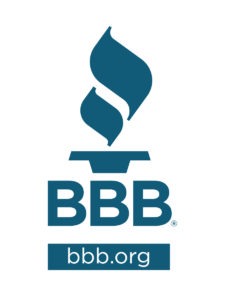 Today’s highlighted blog post from the Council on Better Business Bureaus (CBBB)
Today’s highlighted blog post from the Council on Better Business Bureaus (CBBB)
My Experience With Multi-Level Marketing
By Holly Doering
When I was a little girl, my mom stayed at home to look after us kids while my dad worked. That was just what women did. Especially in a small Idaho town with a limited job market. One day my mother brought home a trunk of cosmetics: almond face lotion, peppermint foot rub. There was even something called “Royal bee jelly”—I think—that was thick and soft but not greasy. The company was called “JAFRA”—Jan and Frank were the owners—and all Mom had to do to make money was to host parties and invite her women friends.
What happened next was what often happens—Mom threw a few parties, went to a few parties, and then the creams and lotions sat in the cupboard for the next decade. (They were really good products though!)
In college, I worked for a fast-food franchise owner who was big into Amway. She bought all their cleaning products for the restaurant. She was convinced that this company was her ticket to early retirement and possibly multi-millionaire-dom. As far as I know, she’s still trying to become a Diamond.
The BBB sometimes gets calls about multi-level marketing (MLM) opportunities. Are they scams? While any particular scenario could be a scam, the short answer is no. MLM is a legitimate business model that has made certain individuals extremely wealthy. However, it isn’t easy.
Many people who get into network marketing don’t have the personality or the tenacity to make a go of it. They chicken out of making cold calls or meeting strangers at Perkins. They don’t want to invest all the time into their home business that would be necessary for it to succeed. Or, they get divorced and end up splitting their downlines.
You see, I worked for a network marketing company for a few years. But not as a distributor—I stayed with a steady paycheck from the corporate offices. It was there that I met a company executive who had gone from abysmal failure—sleeping in his car—to becoming a millionaire with these MLM products. And when he did, his sponsor, the man who recruited him, became a multi-millionaire.
I chose this particular MLM company to work for because their products:
- Were environmentally-friendly
- Were not tested on animals
- Were not significantly more expensive than items in the store
- Were something I could believe in
Here are some tips on how to research a MLM company and make sure it’s right for you. Think about:
- How transparent is the company? Are you getting real answers to your questions, and not just the run-around or a company line? Do they disclose their financials?
- Has the company been around for awhile? (The longer, the better.)
- What is the initial investment?
- Who will support you? Does your sponsor seem like they will actively coach you and have time for you? Can you meet other people in this person’s downline?
- How are refunds—to you and to your customers, clients, prosumers, or whatever they call them—handled? How do they deal with complaints?
- Is their technology easy to use or is it kind of a pain?
- What is the competition?
- Are they aware of or do they subscribe to the Direct Selling Association (DSA) Code of Ethics?
Final thoughts
1) Remember that pyramid schemes, which can look like MLM to begin with, are not legitimate. A genuine MLM opportunity involves product and is not simply mailing cash back and forth.
2) You may not want to make your living from your MLM business—I’ve been to plenty of Cabi, Partylite, Avon, and Pampered Chef parties hosted by friends who just wanted to get these products that they liked discounted or cheaper. Even so, do your homework first. You won’t be sorry you did.
 Free e-book “Business Owner’s Road Map to Success.” It has over 50 pages of techniques for everything a small business owner needs to master, from business planning and ethical selling to a success mindset. It’s all there and it’s free for you. To get it, just “Like” our Facebook Page here: http://on.fb.me/KsIN6P Pass it on!
Free e-book “Business Owner’s Road Map to Success.” It has over 50 pages of techniques for everything a small business owner needs to master, from business planning and ethical selling to a success mindset. It’s all there and it’s free for you. To get it, just “Like” our Facebook Page here: http://on.fb.me/KsIN6P Pass it on!
DSEF and Council on Better Business Bureaus (CBBB) fosters honest and responsive relationships between businesses and consumers—instilling consumer confidence and advancing a trustworthy marketplace for all.
About the Better Business Bureaus
As the leader in advancing marketplace trust, Better Business Bureau is an unbiased non-profit organization that sets and upholds high standards for fair and honest business behavior. Every year, more than 87 million consumers rely on BBB Business Reviews® and BBB Wise Giving Reports® to help them find trustworthy businesses and charities across North America. Visitwww.bbb.org/us for more information.



![MP900443323[1]](https://dsef.org/wp-content/uploads/2011/12/MP9004433231-200x300.jpg)




![MP900316784[1]](https://dsef.org/wp-content/uploads/2011/12/MP9003167841-195x300.jpg)




